“Do more with less” is the new marching order for go-to-market teams. It’s a hard one to follow.
Prospects are less responsive. Buyers are actively seeking rep-free sales experiences. And both workforce and technology stack contractions are limiting the pool of potential customers.
Enter signal-based GTM—the new standard for any team responsible for finding, closing, growing, or retaining revenue.
Capturing buying signals allows you to identify who’s in-market (or who’s about to be), prioritize accordingly, and take action with context. In short, it makes it possible to do more with less.
But signals themselves aren’t enough. You have to be thoughtful to deliver real results and do so efficiently.
So, without further ado, here’s how to run a signal-based GTM motion, from selecting your signals to scaling what works (and don’t forget to check out the recording above from our friends at RevGenius if you’re more of a visual learner!).
Select the right signals (aka the what)
The most common question people have is: Where do I start?
The answer is: It depends (the worst answer—we know).
The most important thing to keep in mind is this: To get the best results, you have to maximize the overlap between your audience (the signals generated by high-fit buyers and customers) and your offer (the relevance of your response to those signals).
This is what allows organizations to deliver on the holy grail of go-to-market: right person, right message, right time.
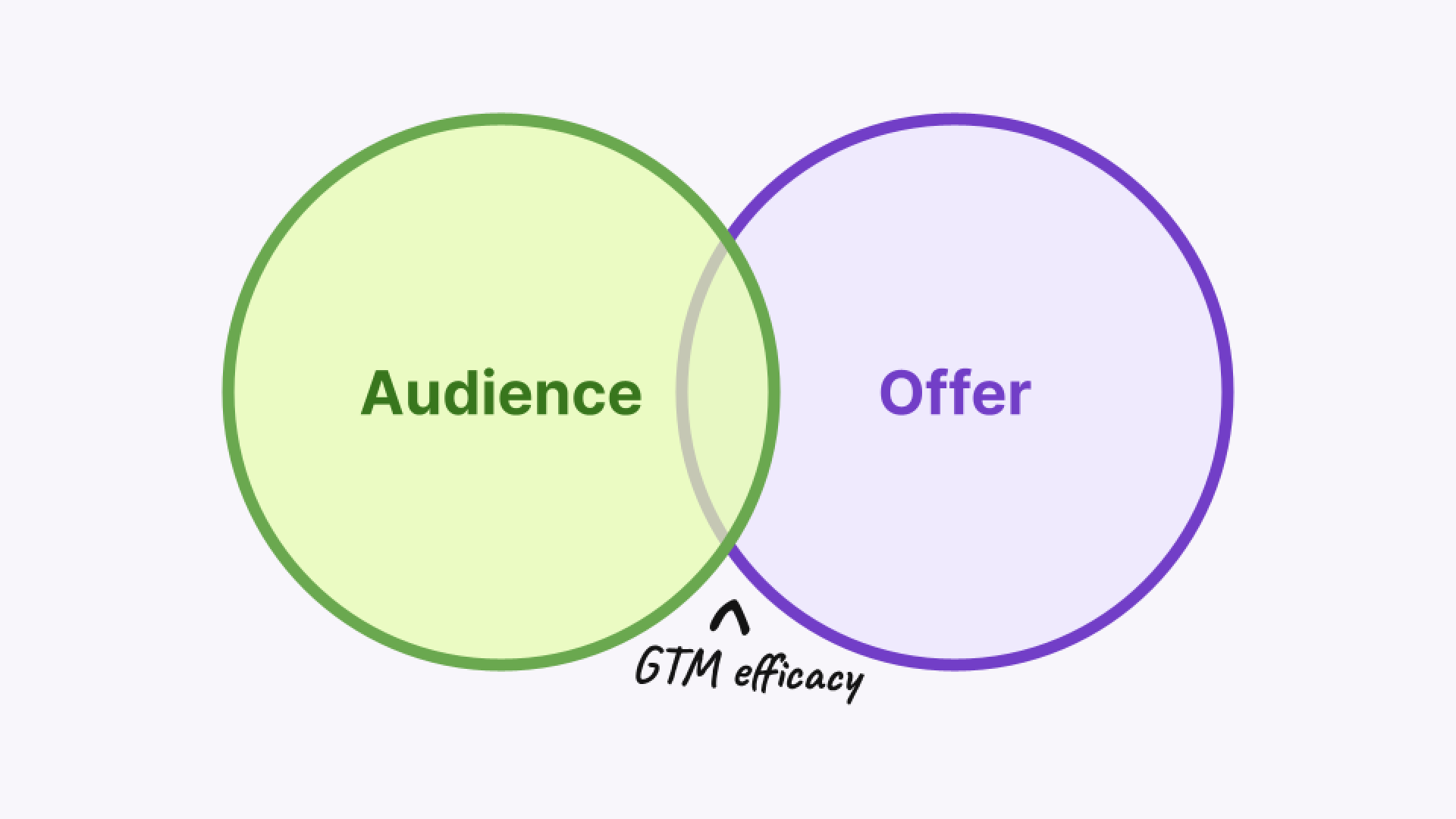
While the signals you choose will differ depending on your go-to-market motion, here’s a methodology every organization can use to zero in on the right ones:
Brainstorm signal options
First, list out all possible options based on your digital ecosystem (check out our GTM signal library for inspiration).
Some common examples include:
- Customer or champion job changes
- Economic buyer activity
- Surges in product usage
- Social content engagement
- Questions in owned communities
- Pull requests in open-source repositories
Compare signal volume and conversion rates
Next, map out these signals based on volume and conversion rate.
This can be done using a spreadsheet (in fact, here’s a template):
- Column A: Signal
- Column B: Frequency of signal among your ideal customer profile (use historical data if possible)
- Column C: Baseline conversion rate of signal to pipeline
- Column D: Estimated pipeline impact of signal
- Column E: Level of difficulty in executing on signal (we’ll come back to this one in a bit)
Then plot these signals on a graph.

Generally speaking, the higher the volume, the lower the conversion rate.
There’s a good chance your organization already has automated processes in place for low-volume, high-converting signals (think demo requests on your website).
And while high-volume, low-converting signals are an area of opportunity, they may require a lot of overhead in terms of capturing and executing on them (this is where column E comes in).
Kick things off by focusing on “easier” signals that strike the right balance between volume and conversion rate.
You want to start by validating signal efficacy. Choosing a handful of signals from this “golden zone” will help you balance effort and outcome.
Group similar signals together
Once you’ve got enough signals to work with, group them together based on channel or category.
This will help you determine which signals are easiest to track versus the ones that may require technical assistance or new tooling.
Plus, signals that fall within the same bucket will likely share similarities in terms of messaging patterns.
For example, outreach that calls out a product trigger and gives you the ability to share information about an inferred use case could apply to multiple signals related to product usage.

Match messaging to different signals
Finally, craft compelling messaging based on the context of each signal.
If the signal is someone visiting an integration page on your website, your outreach may include a customer story that details how that integration is used.
If the signal is product users hitting a usage threshold on their current plan, your outreach may include an offer to walk users through different plan options before they lose access.
If the signal is an economic buyer engaging with one of your competitors online, your outreach may include a comparison of your two solutions or user reviews that highlight the differences between your products.
Remember: The more overlap there is between the signal and the relevance of the messaging, the better your conversion rate will be.
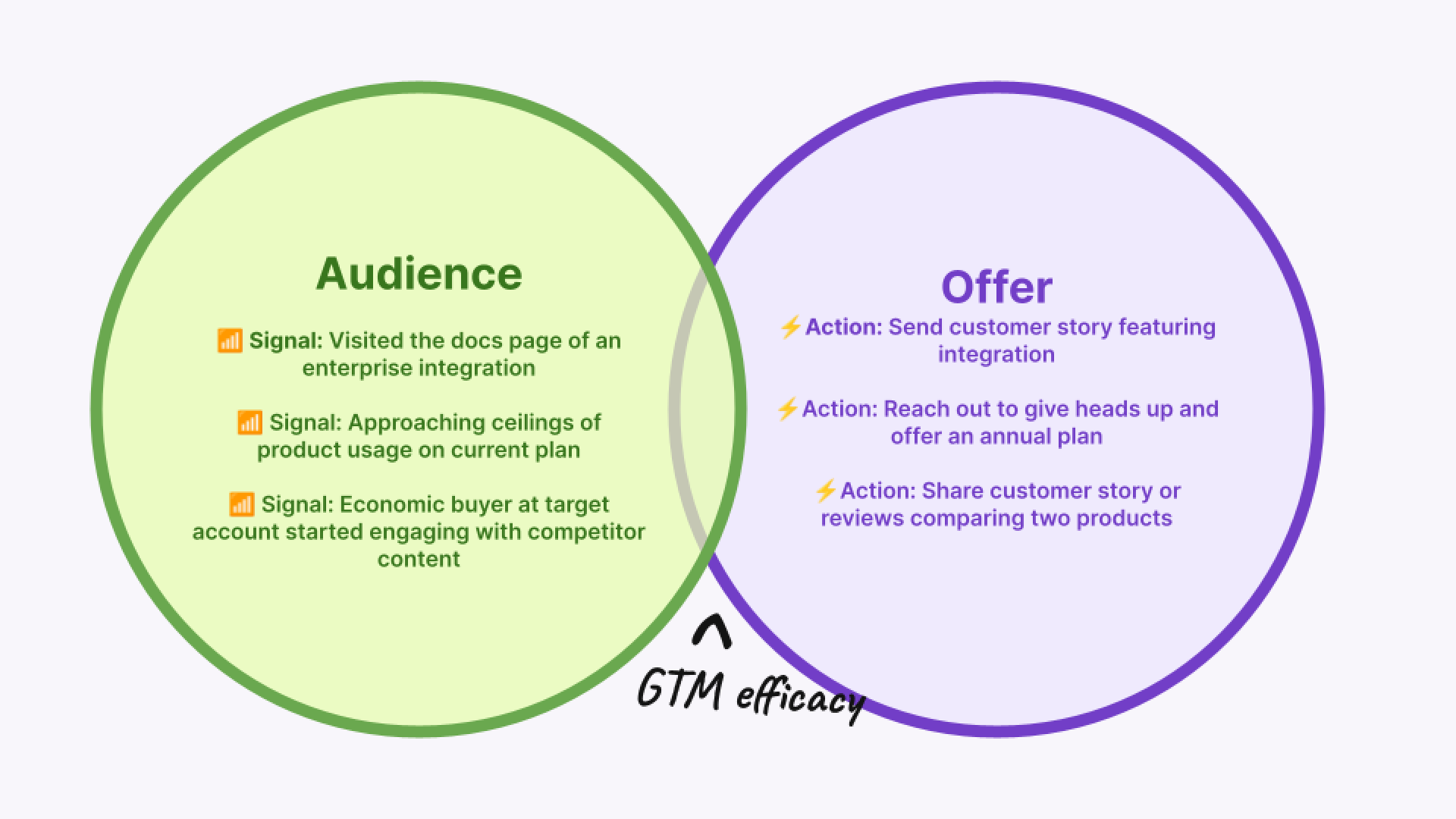
Scale what works (aka the how)
It’s helpful to approach signal-based plays with a crawl-walk-run framework in mind. This way you can test individual plays without a ton of overhead and scale the winners over time.
Crawl (completely manual)
The idea in this stage is to run a proof of concept so you can get a feel for what works. To quote Paul Graham: Do things that don’t scale.
Here’s a real-world example:
We found an influencer on LinkedIn who publishes content about problems our product can solve. We looked through the comments and reactions on one of their posts.
Next, we filtered out individuals who don’t fit our ICP. Then we sent a DM to qualified individuals referencing the post and their interest in it.

Something like this is tedious, sure, but it’s not terribly time-consuming and it doesn’t require any extra tooling. It’s something the average rep could do today without any help from other teams.
Walk (last-mile human touch)
The idea in this stage is to move forward with plays that generated positive results in the crawl phase. You can automate signal capture while still maintaining control over last-mile action.
Continuing with the example above, we automated the process of finding and segmenting people in our ICP who engage with relevant LinkedIn influencers.
We added people who interacted with certain posts—including their profile URLs, the actions they took, and so on—to a spreadsheet using Zapier. We then uploaded that sheet to Common Room, which automatically enriches identities and matches people to specific accounts.
Individuals who match our ICP are automatically added to a dedicated segment within Common Room for “socially engaged” prospects. This segment acts as a burn-down list for our reps. It’s refreshed daily so our sales team can go in and add individuals to hyper-personalized Outreach sequences.
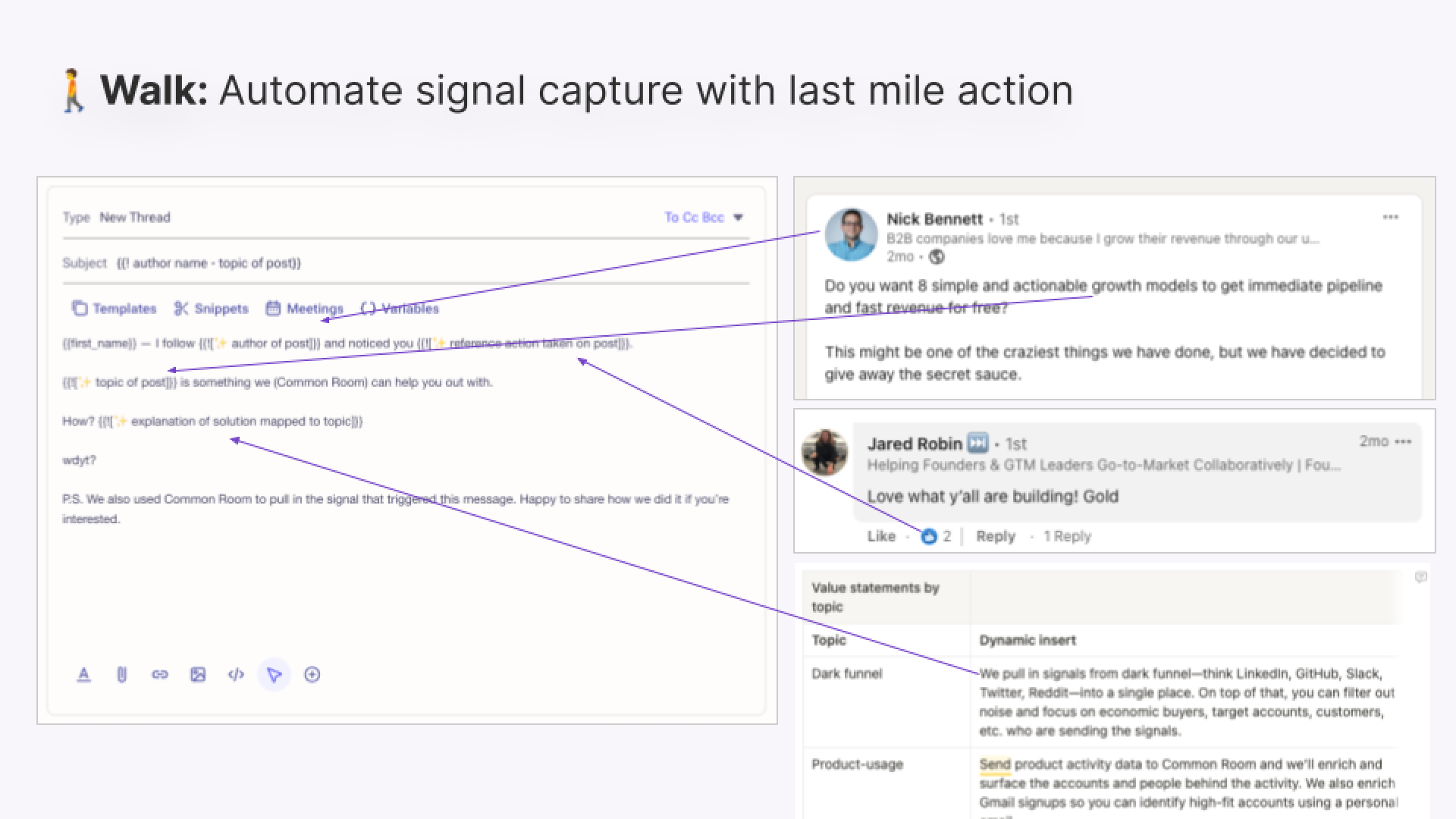
The heavy lifting of researching and prioritizing people and accounts is eliminated, but there’s still an element of human review.
Run (end-to-end automation)
The idea in this stage is to reach signal nirvana: generating pipe while you’re away. You can automate the end-to-end journey from signal to action with zero human input.
We haven’t reached this stage with the example above (yet), but here’s another real-world example:
We pump website pricing page activity directly into Common Room. Using our identity resolution and enrichment engine—Person360™—we automatically filter out anyone who’s not an economic buyer and cross-reference this activity with account ownership for different opportunities.
Using customizable automations (we call them workflows at Common Room), we add individuals who meet our criteria to Outreach sequences that are personalized based on their actions on the page—all without human intervention.

This is a play that allows us to go after low-hanging fruit and grow revenue on autopilot.
Start stacking signals
No matter the play, you’ll eventually hit a ceiling on efficacy.
This doesn’t mean you should stop running a play, but it does mean you should explore one of two options:
- Optimize your messaging to improve conversion rates (this is where you should start).
- Expand your aperture by creating new signal-based plays.
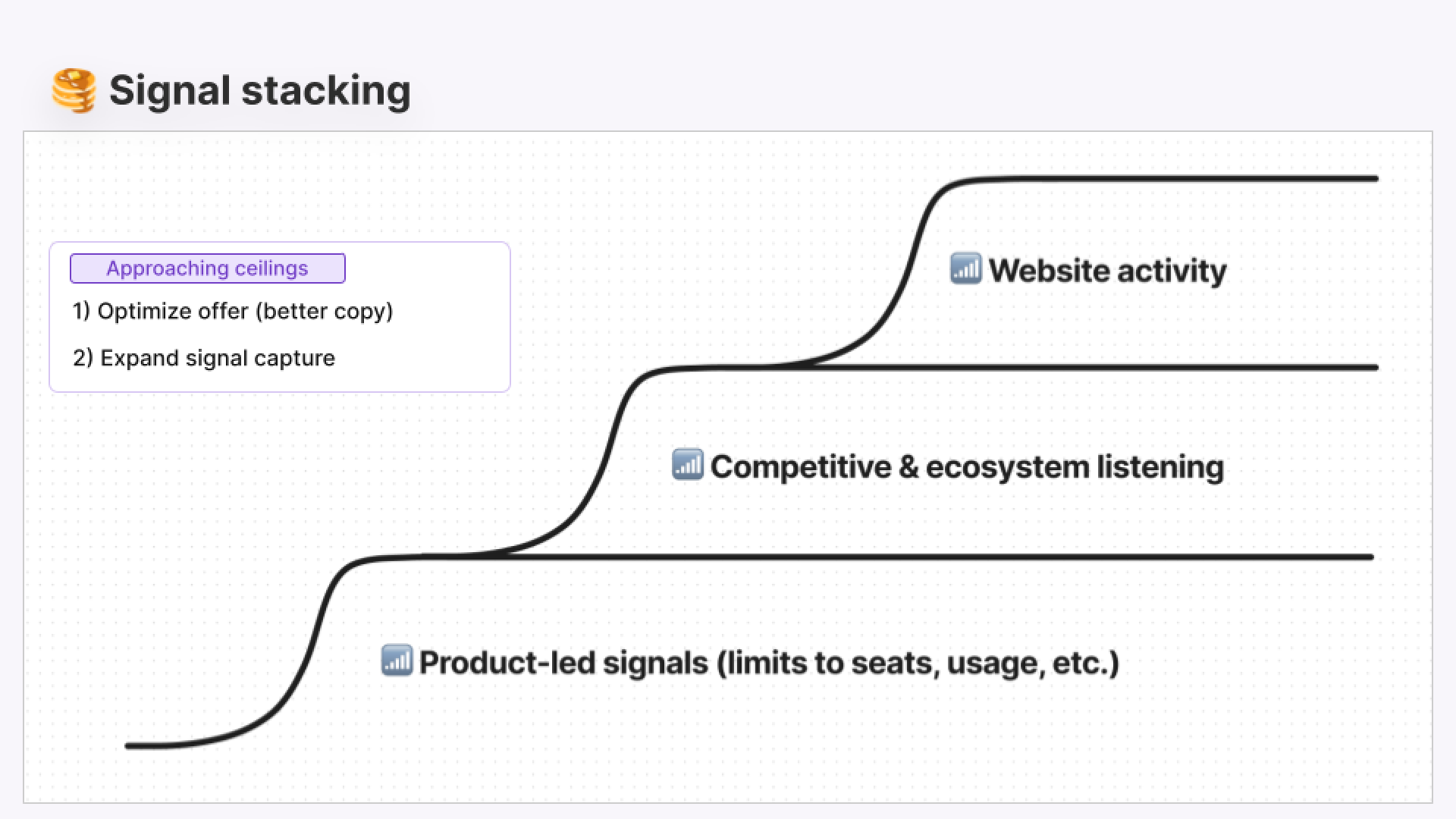
You can revisit the crawl-walk-run framework for each new play to test, optimize, and templatize.
Then, when that signal shows signs of reaching maximum potential, you can start to layer on more.
Lather, rinse, repeat.
Common Room helps you operationalize your signal-based selling strategy
You don’t need Common Room to take a signal-based approach to GTM.
But it helps. A lot.
Here’s how.
Digital signal capture
Common Room auto-collects signals from hard-to-capture corners of the internet. We provide natively built and fully managed integrations with dozens of data sources—website, product, CRM, social, community, open-source, and more.
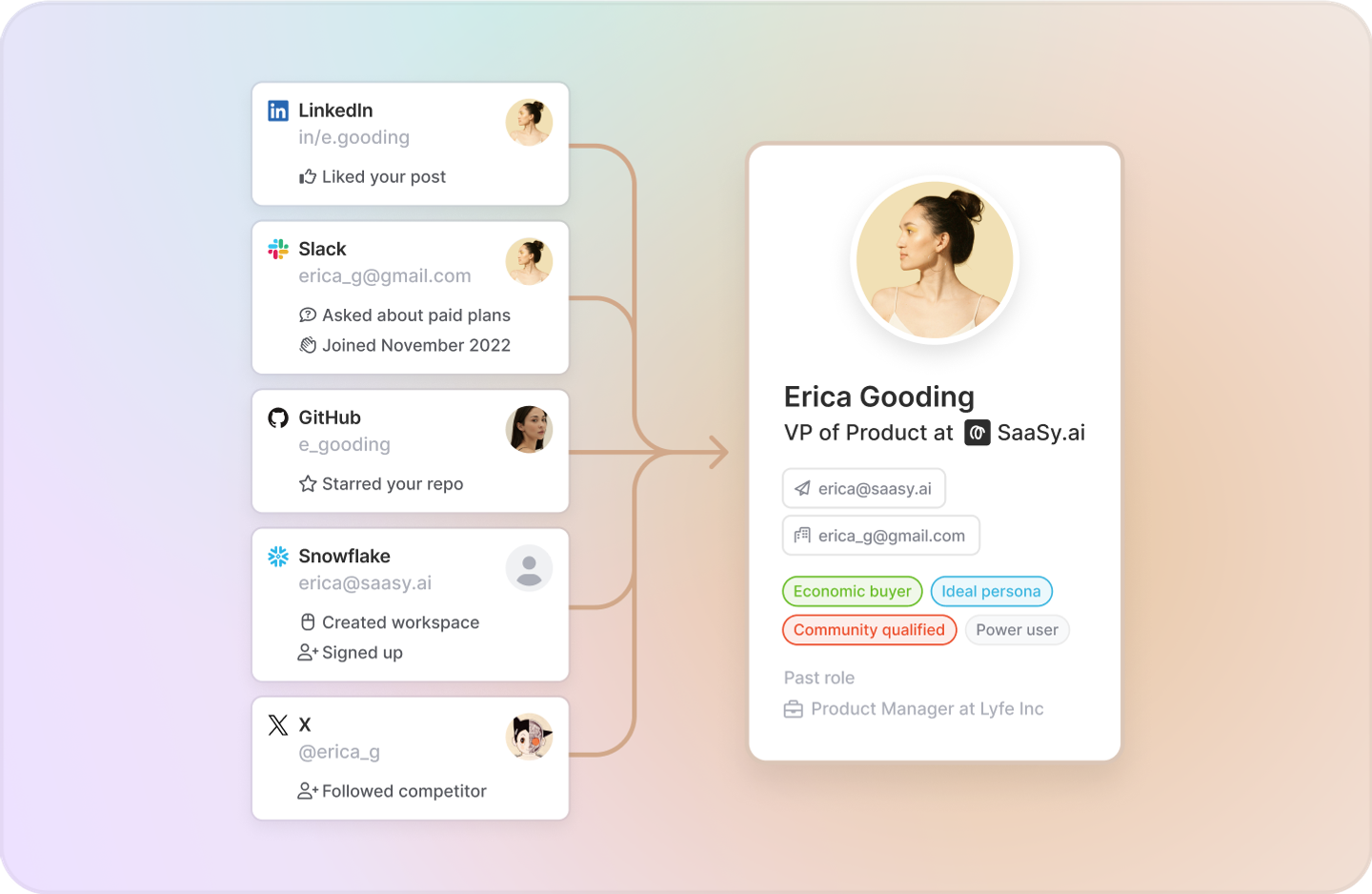
Unified identity and account intelligence
We unify every signal into a single profile for every person and account. These profiles are fleshed out via waterfall enrichment and our own AI-powered Person360 technology. GTM teams get full visibility into the customer journey, as well as a 360-degree view of everyone associated with a given account (multi-threading for the win!).
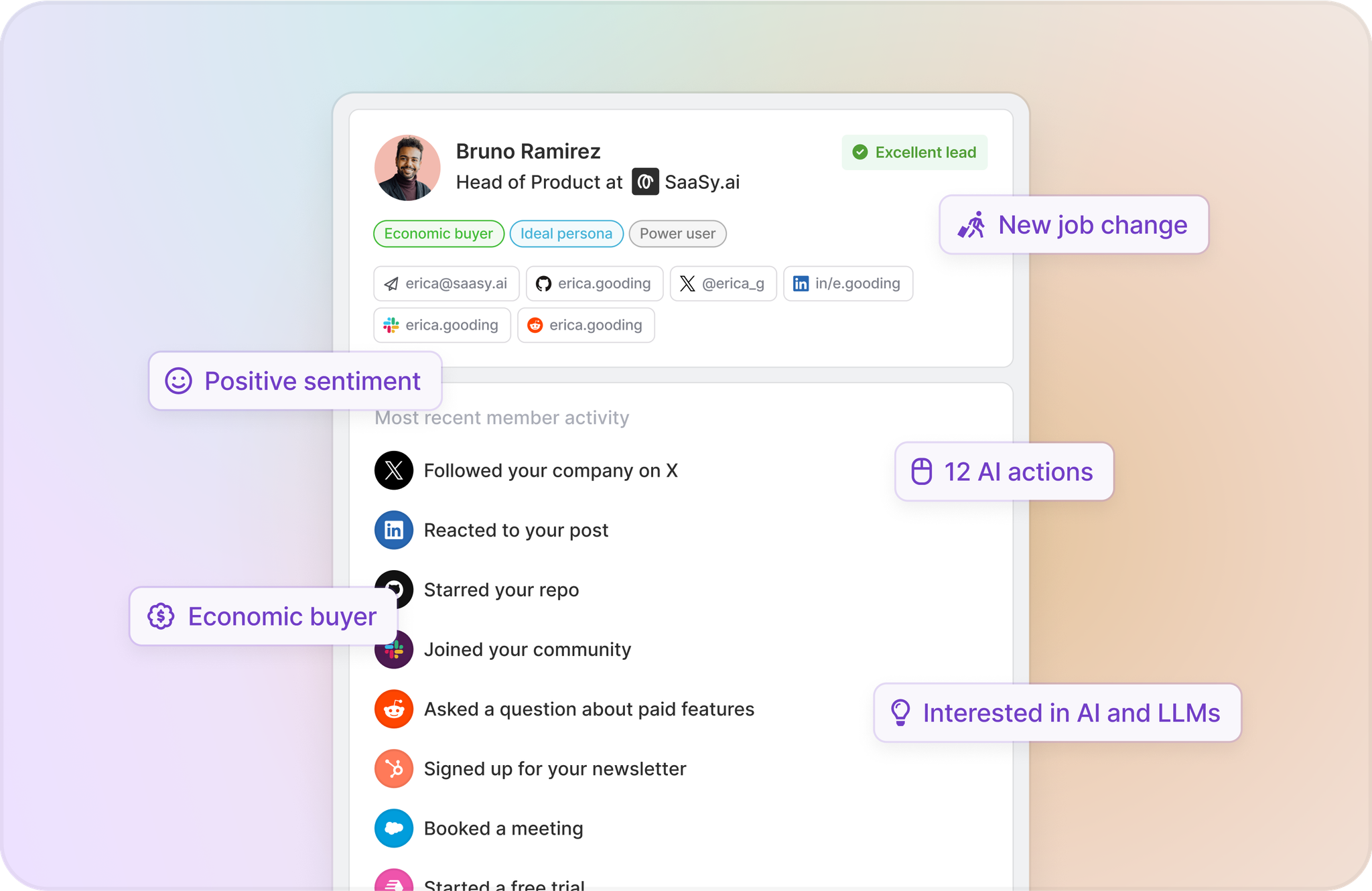
Actions and automation
We help GTM teams act fast with user-friendly actions and automations. Improve speed to lead with real-time sales alerts, streamline prospecting with automated segmentation, engage buyers at scale with flexible workflows, and a whole lot more.
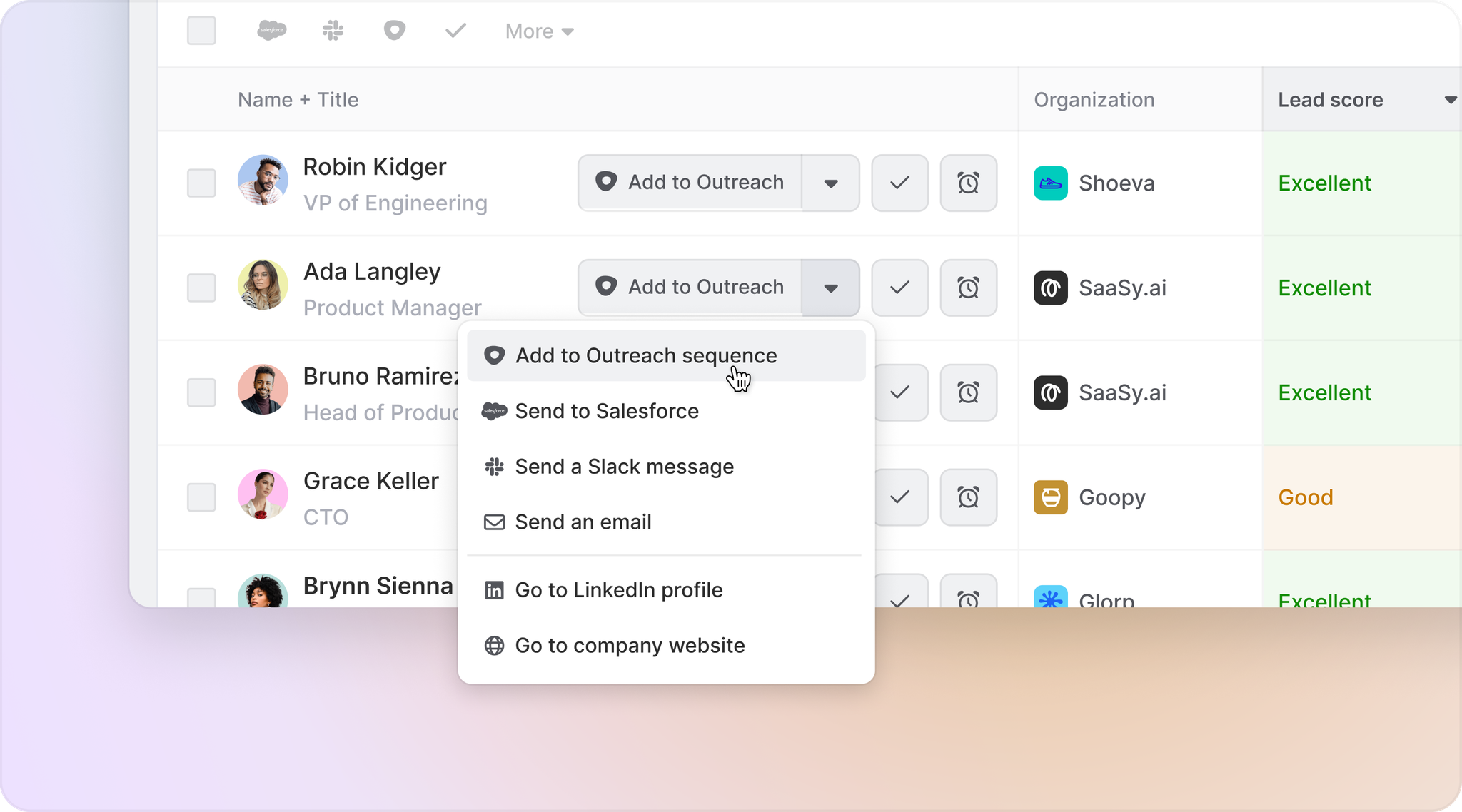
Best of all, we offer a free self-serve version you can test out yourself.
Happy signal hunting.
Build a better signal-based selling motion with Common Room
Get started for free or get in touch to see how Common Room helps you rapidly build, iterate, and automate a signal-based GTM motion.
